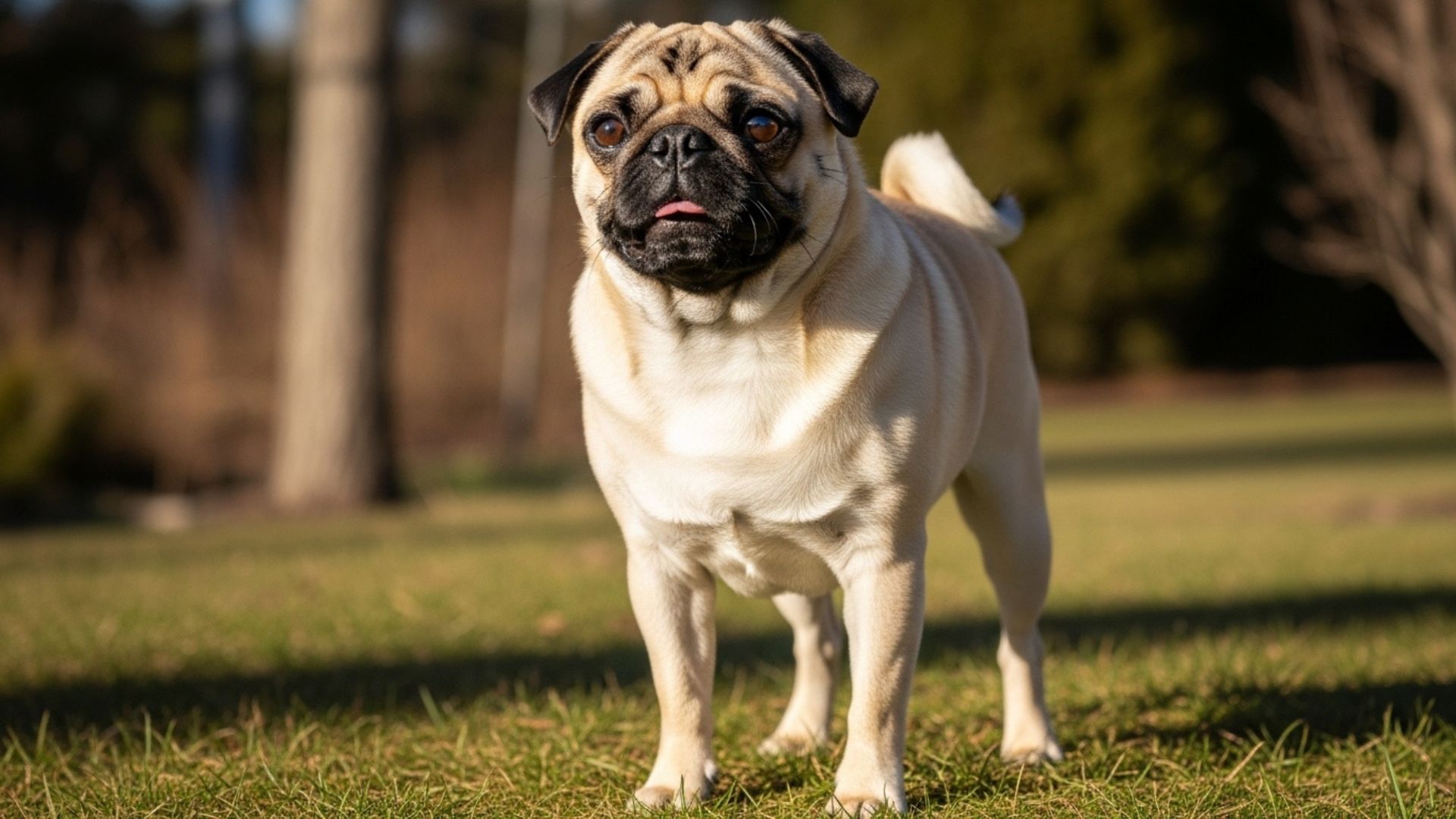Have you ever noticed how a dog’s personality seems to shine right through its nose? Some pups have snouts so distinct they almost feel like signatures, shaped by generations of history, instinct, and a bit of quirky charm.
From button-sized noses that look like they were drawn on to impressively long muzzles that seem built for detective-level sniffing, certain breeds stand out for features that are anything but ordinary. These unique noses do more than add character.
They influence how dogs explore the world, communicate, and even do their jobs. Whether you love the adorable, the unusual, or the downright impressive, exploring the breeds with the most remarkable noses offers a fun look at what makes each one special.
Get ready to meet the dogs whose snouts steal the spotlight and show just how wonderfully varied the canine world can be.
Dog Breeds That Have the Most Unique Noses
1. Greyhound
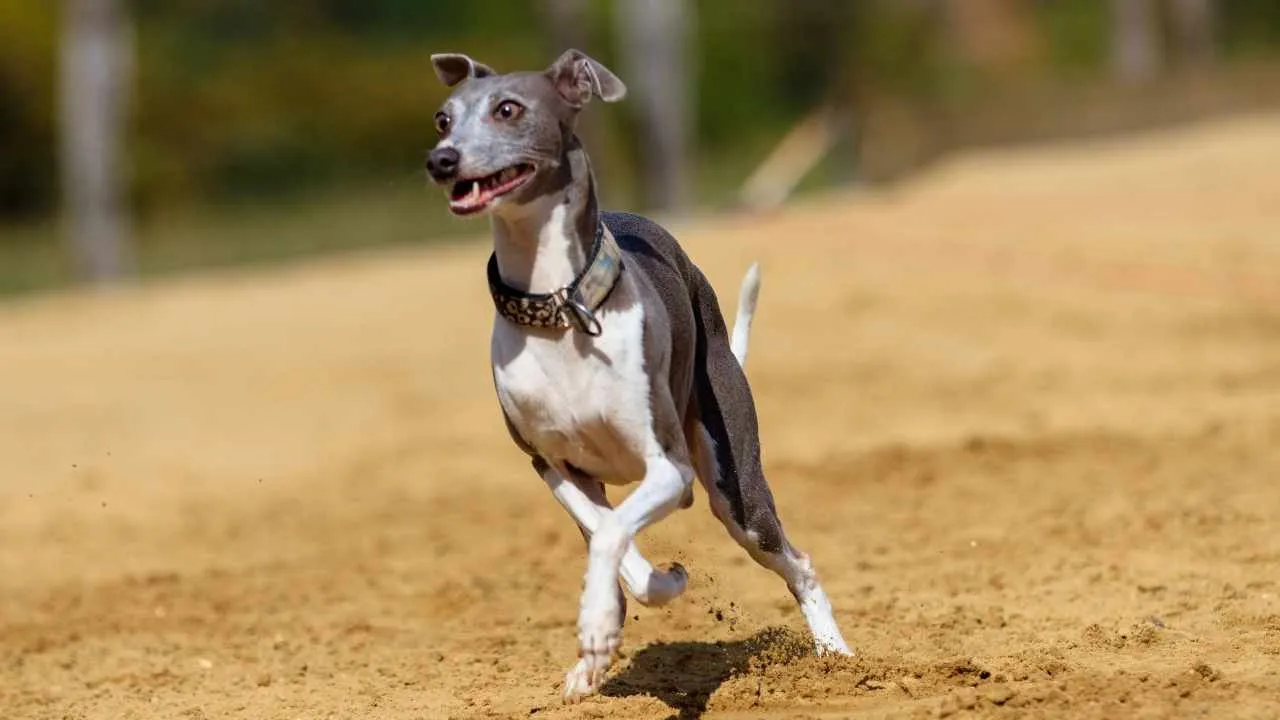
The Greyhound’s long, narrow skull and sleek muzzle are part of its iconic silhouette. This refined head shape aligns with the breed’s history as a champion sprinter that relied on vision more than scent. Its streamlined face helps create the aerodynamic form that makes the breed one of the fastest dogs in the world.
Originally developed as a sighthound, the greyhound used its keen ability to detect motion across great distances, as noted by the AKC. Its elongated nose complements a lean, balanced body built for speed and agility. Despite this athletic heritage, the greyhound’s personality remains gentle and surprisingly calm once indoors.
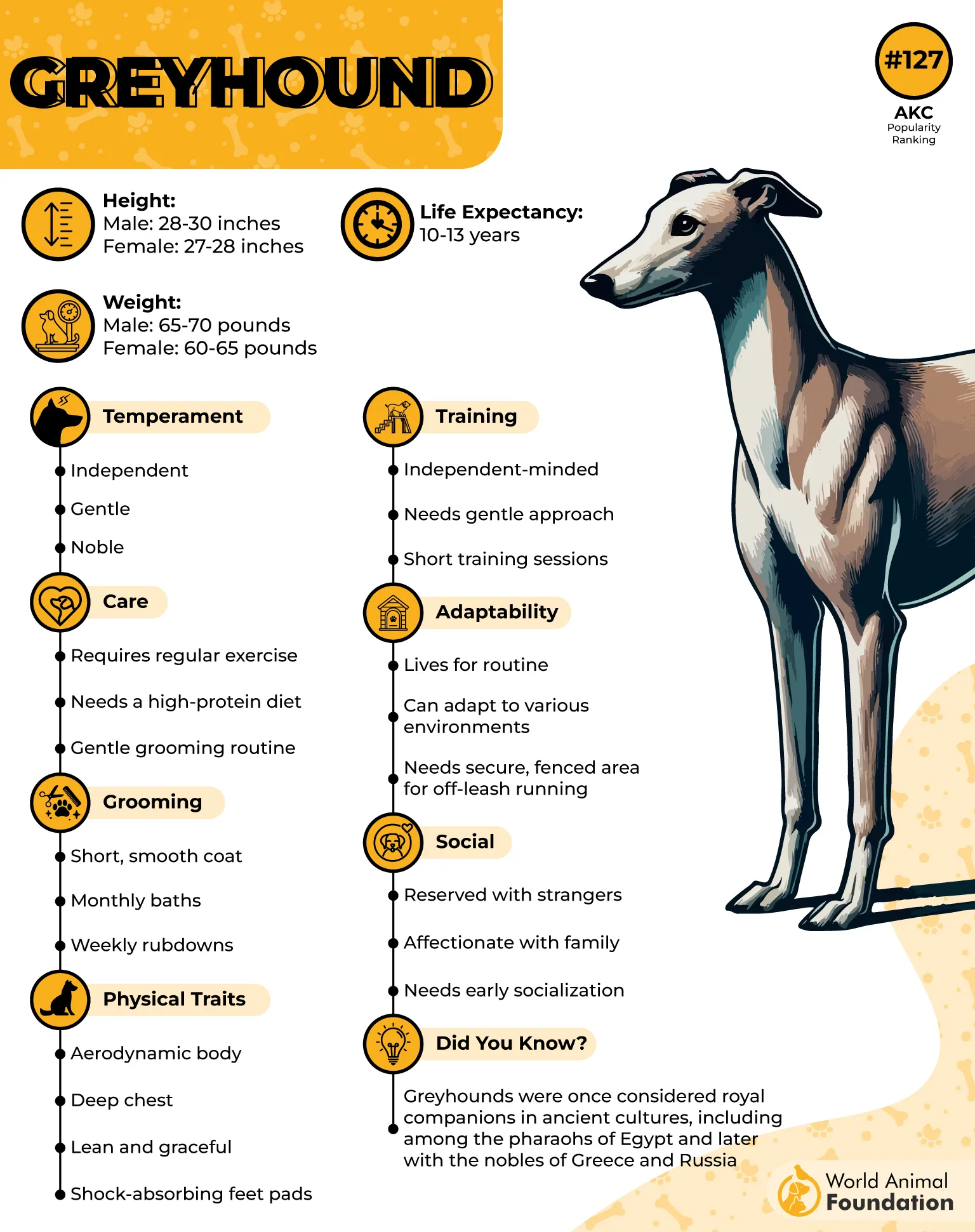
The breed’s deep chest, tucked waist, and graceful neck further highlight its elegant outline. The long muzzle is one of the key features contributing to its efficient airflow during sprinting. These dogs pair their athletic design with a sweet nature that makes them well-suited to relaxed home environments.
Greyhounds typically need only moderate exercise. Although they can unleash incredible bursts of speed outside, they are often mellow, quiet companions inside the home. Weekly grooming and simple care routines are generally enough to keep them comfortable.
Their noble appearance and kind temperament help them transition smoothly from working dogs to beloved companions. The long nose that once supported racing performance now adds charm and character to a breed adored for its peaceful, affectionate demeanor.
Fun Fact
Greyhounds can reach speeds up to 45 miles per hour, and their long muzzle plays a role in reducing air resistance during a sprint. This natural aerodynamic advantage is one reason they’re considered one of the fastest dog breeds on earth.
2. Whippet
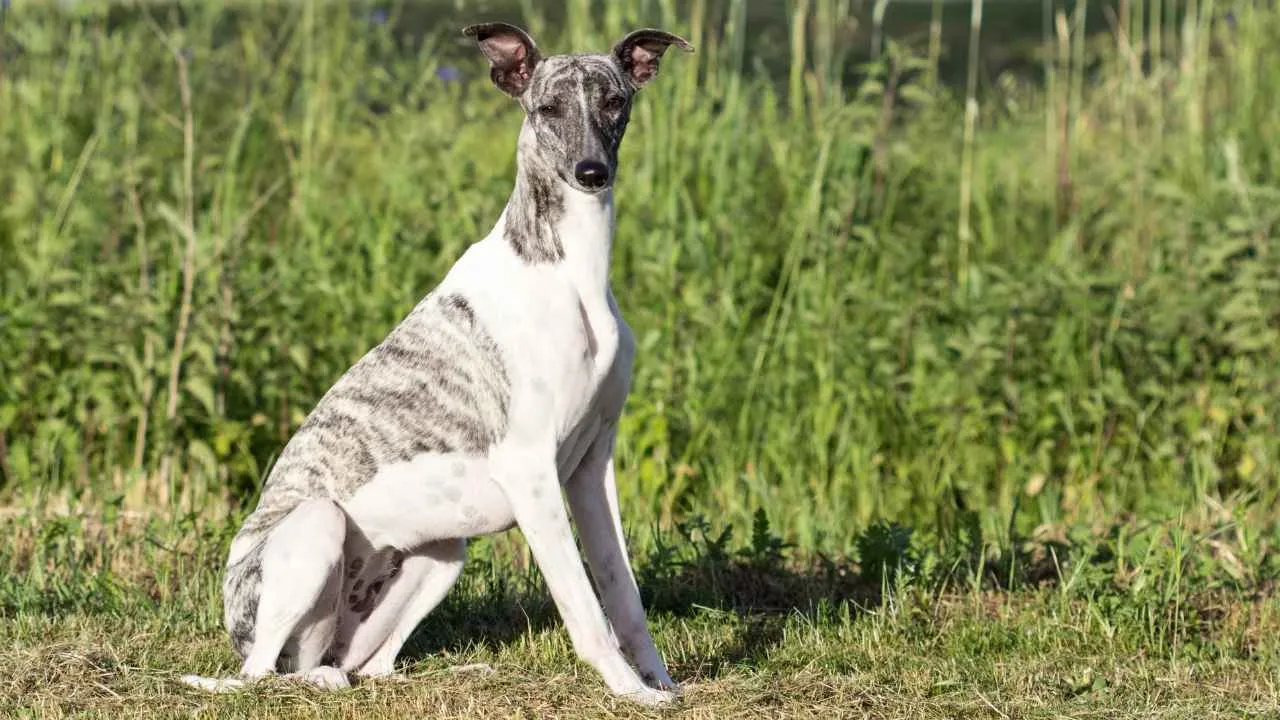
The Whippet’s refined head and elongated muzzle reflect its heritage as a smaller, swift hunter. This sleek facial structure contributes to an aerodynamic build similar to that of the greyhound. The breed was historically valued for chasing small game with quick bursts of speed.
As per PetMD, Whippets are known for balancing athletic skill with a calm, affectionate nature. Their streamlined nose enhances airflow during high-speed chases, complementing the breed’s lean frame. While their instincts make them agile and alert outdoors, they settle easily into relaxed routines indoors.

Originally bred in England, the whippet was prized for excelling in racing sports. Its long snout forms an important part of its athletic outline, adding both elegance and functional design. Despite their speed, they tend to be gentle, sensitive companions.
Grooming requirements remain minimal, thanks to their short coat. Most whippets enjoy soft bedding, cozy spots to nap in, and controlled exercise that lets them stretch their legs. Their build favors agility, yet these dogs are surprisingly low-maintenance.
Whippets typically enjoy a long, healthy lifespan. Their long muzzle and graceful head shape help maintain their signature sleek profile. Today, they are beloved both for their beauty and their sweet, adaptable temperament.
Fun Fact
The Whippet’s long nose contributes to its remarkable acceleration, allowing many to reach racing speeds quickly. Yet despite their athletic ability, whippets are famously fond of lounging for hours at a time.
3. Dachshund
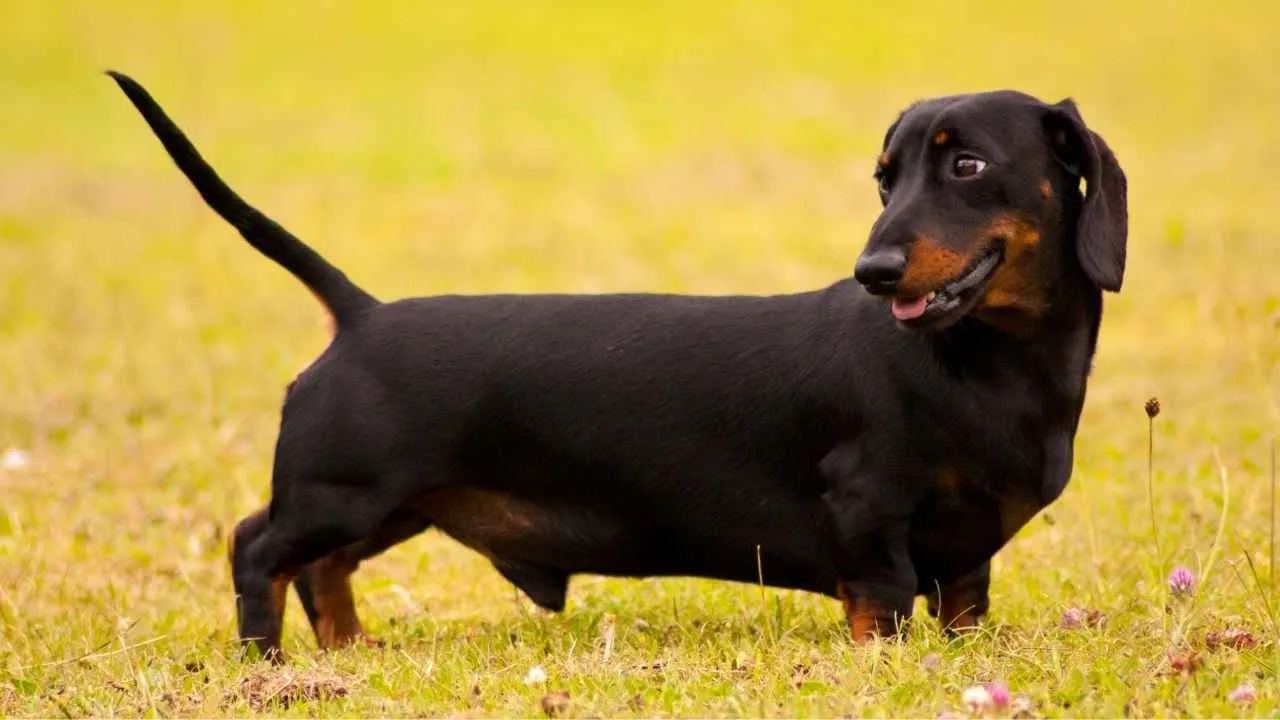
The Dachshund is instantly recognized by its long muzzle paired with a stretched body and short legs. This distinctive look developed from its original job: pursuing badgers and other burrowing animals underground. The extended nose helped the dachshund track scent and navigate tight tunnels.
The breed’s name translates to “badger dog,” a nod to its working past. Its long muzzle gave it the sensory ability needed for scent-focused hunting. That same feature now adds quirky charm to one of the most beloved companion breeds.
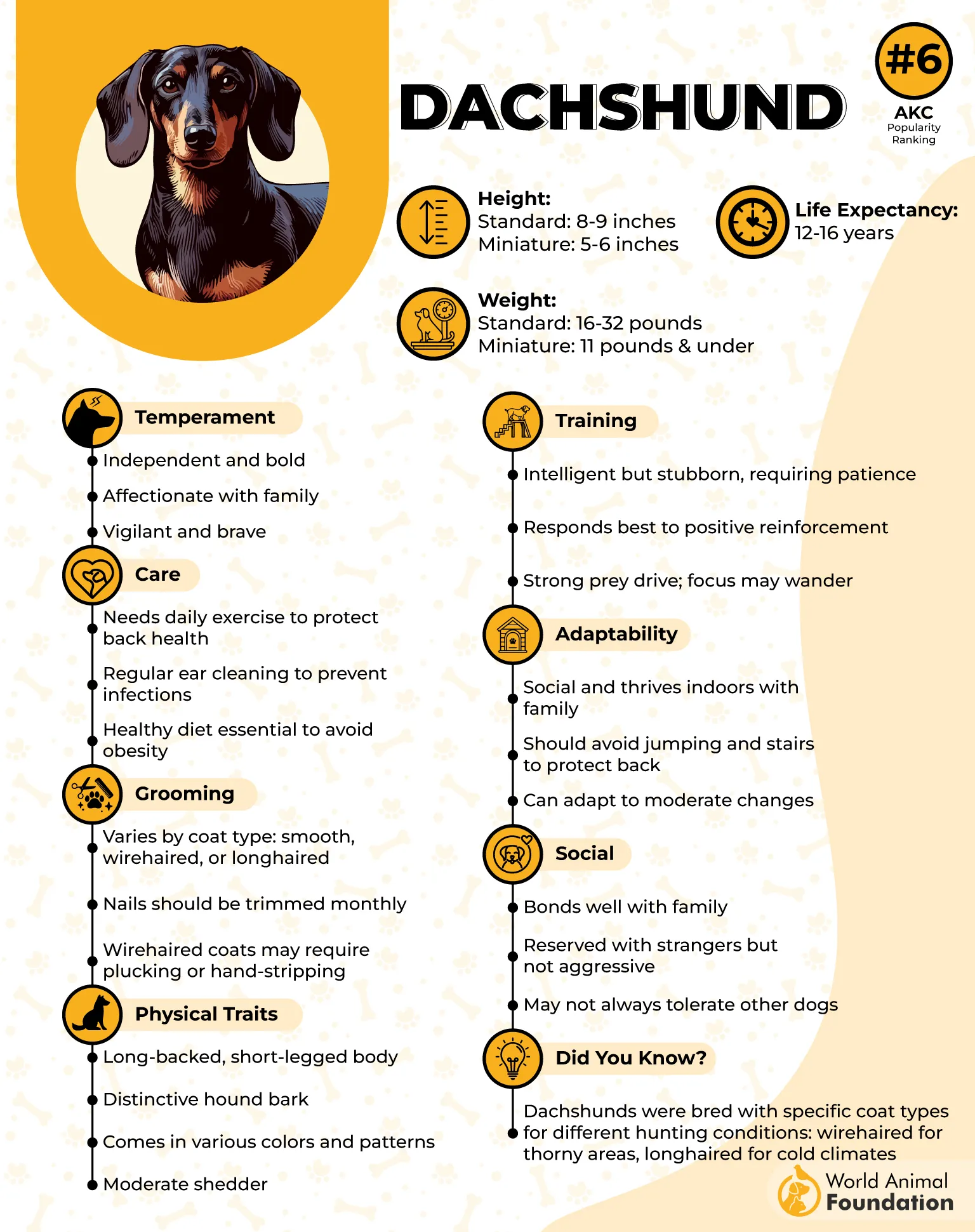
Dachshunds come in smooth, longhaired, and wirehaired coat varieties, as well as standard and miniature sizes. Regardless of type, the elongated snout remains a defining characteristic. This structure enhances their alert expression and lively personality.
The breed is known for boldness and confidence. As per Britannica, Dachshunds may show a strong independent streak, reflecting their determined hunting instincts. Owners typically enjoy their spirited nature and strong loyalty.
Their long back requires mindful care, especially when jumping or climbing. Despite this, dachshunds remain active, affectionate companions with a cheerful presence. Their long nose continues to play a role in their curious, scent-driven behavior.
Fun Fact
The dachshund’s long nose worked together with its slender body to help it enter narrow dens while tracking prey. This practical design made the breed a fearless tunneling hunter.
4. Afghan Hound
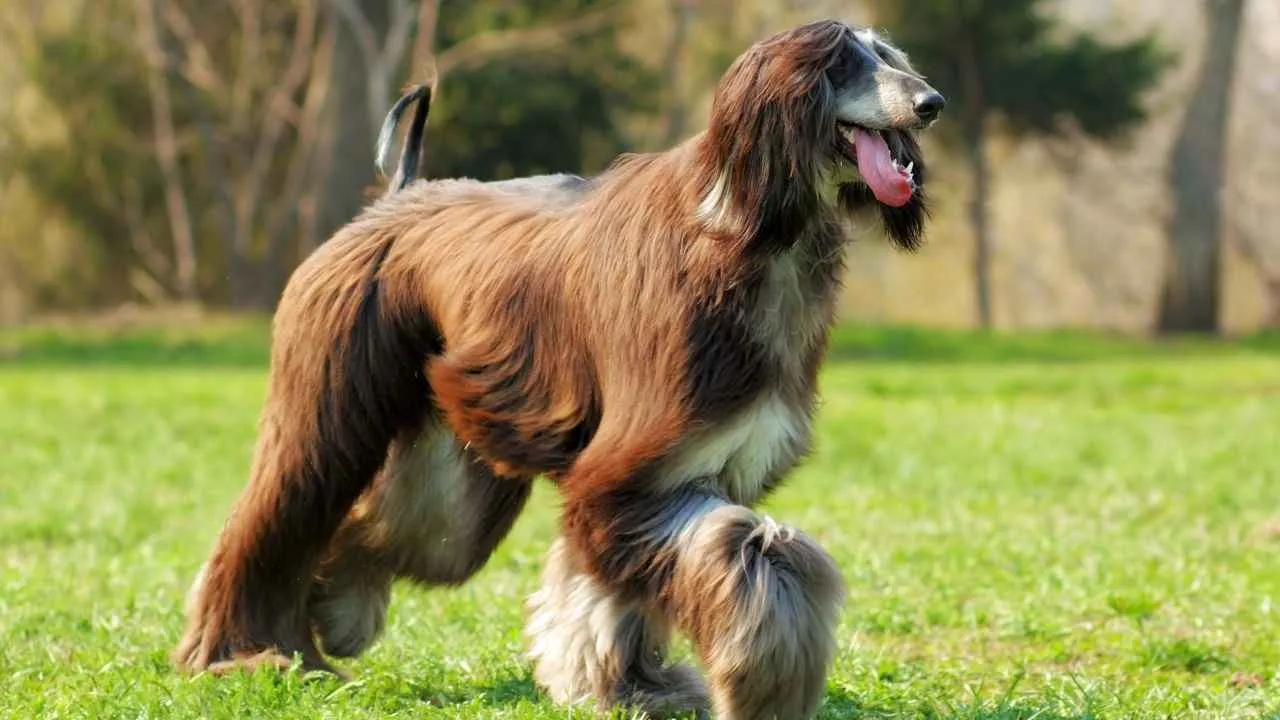
The Afghan Hound features a long, narrow muzzle that contributes to its elegant and aristocratic look. This refined structure complements the breed’s history as a swift hunter in rugged terrain. The elongated nose supports the aerodynamic build that allowed the Afghan to move quickly across mountains and deserts.
This ancient sighthound is known for its proud posture and flowing coat. Its distinctive head and muzzle create a dramatic profile, adding to the breed’s striking appearance. The long snout enhances airflow during fast pursuits, making it a functional part of its heritage.

Afghan Hounds were originally bred in regions of Afghanistan and surrounding areas. Their tall frame and lengthy muzzle helped them track and pursue prey over long distances. Even today, their expressive face and regal bearing make them stand out.
Although graceful, the breed can have an independent personality. Consistent training and thoughtful socialization help bring out their affectionate side. Their beauty is paired with a temperament suited for owners who appreciate both elegance and individuality.
Their luxurious coat requires dedicated grooming. When cared for well, Afghan Hounds become stunning, loyal companions with a presence unlike any other. Their long muzzle remains one of the features that sets them apart in the canine world.
Fun Fact
The Afghan Hound’s distinctive long nose helped streamline airflow during high-speed desert hunts. It remains one of the most recognizable snout shapes among all dog breeds.
5. Saluki
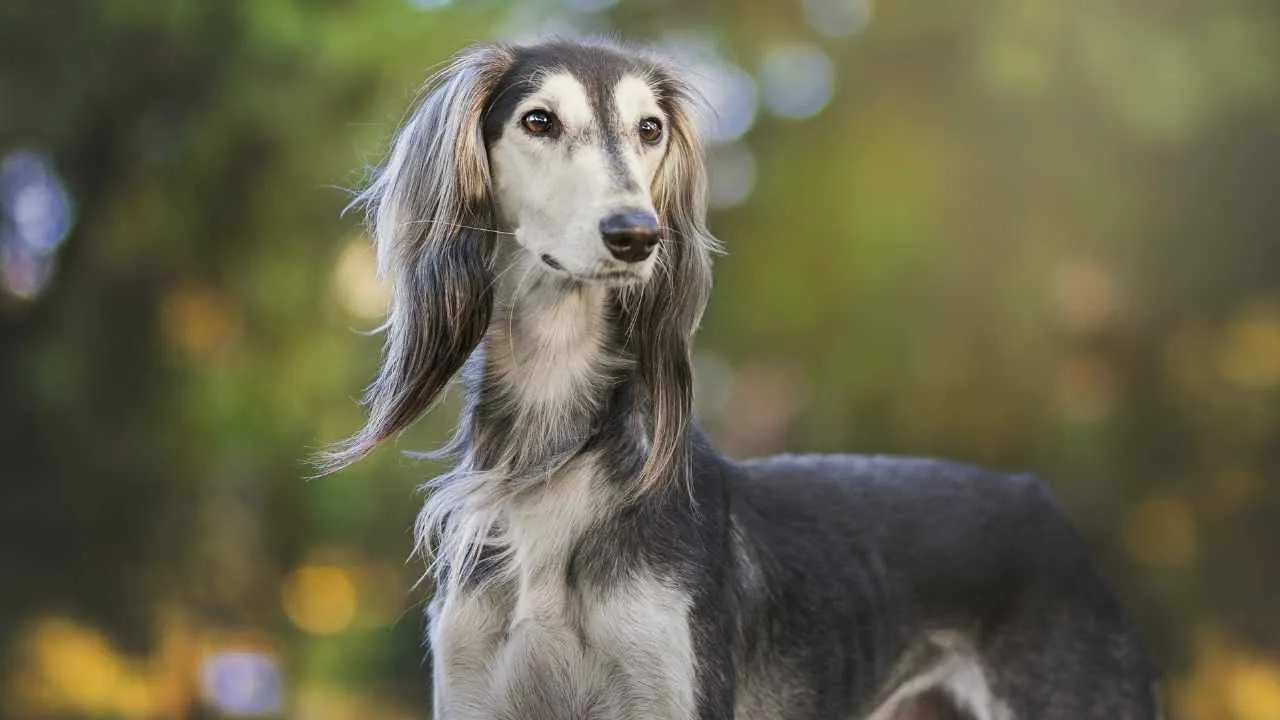
The Saluki is known for its long, narrow muzzle that adds to its elegant and refined profile. This facial structure reflects its history as one of the world’s oldest hunting breeds. Its elongated nose supports a streamlined shape suited for swift pursuits across open terrain.
Bred in ancient Middle Eastern regions, the Saluki excelled at chasing game over long distances. Its long snout contributes to efficient airflow during fast runs. This combination of endurance and speed made the breed a prized hunting companion for thousands of years.
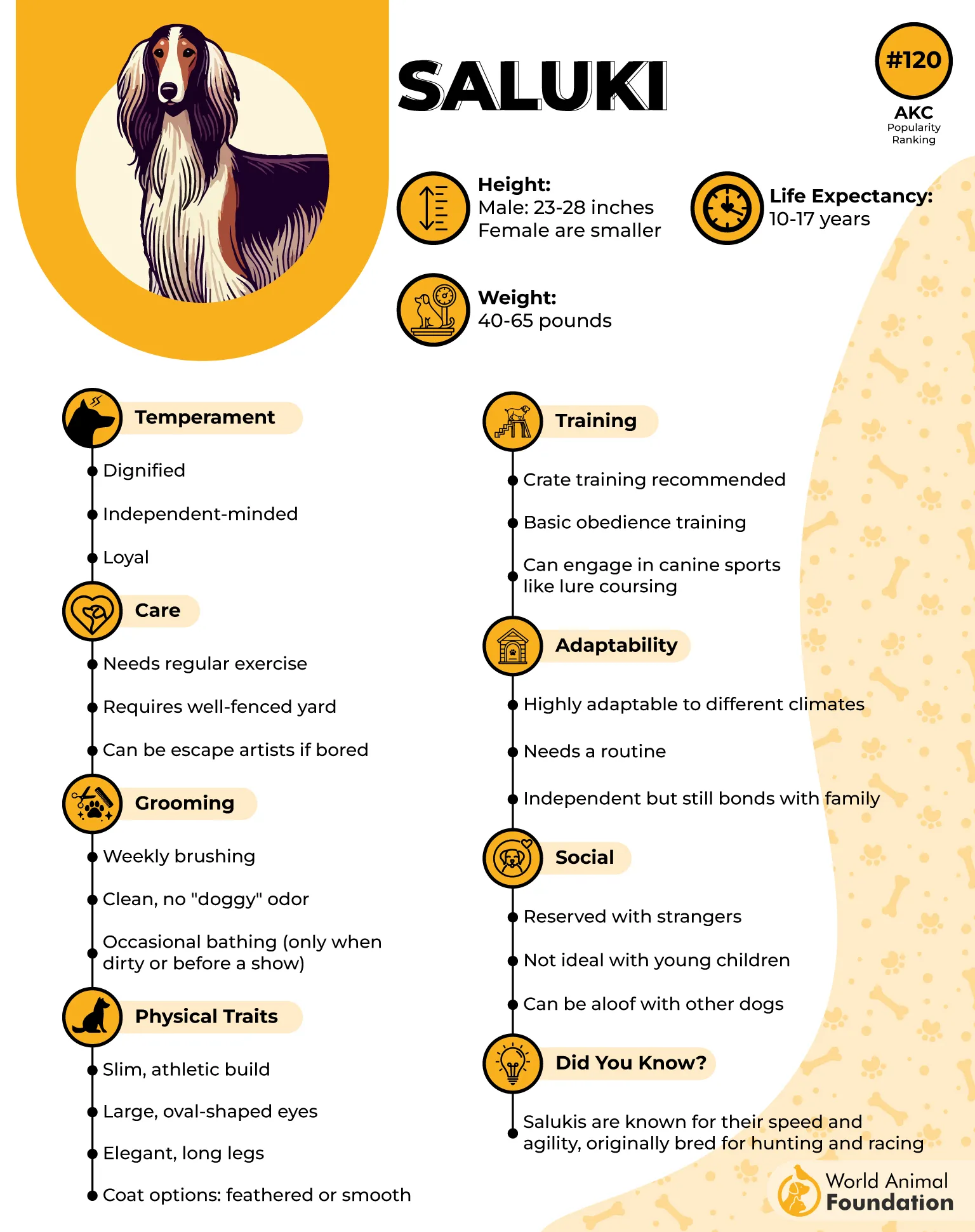
The Saluki’s graceful appearance is complemented by a gentle, reserved personality. While affectionate with family, it often maintains a dignified presence around strangers. Its expressive face and delicate build make it stand out among sighthounds.
Care for the breed includes regular exercise that allows it to stretch its legs. Despite its athletic nature, the Saluki enjoys peaceful indoor time. Its long nose and slender frame complete a uniquely balanced blend of beauty and performance.
Today, the Saluki is admired for both its heritage and elegance. Its elongated muzzle remains one of its most recognizable features. The breed continues to be celebrated for its silky movement and calm temperament.
Fun Fact
The Saluki once hunted alongside civilizations of ancient Egypt, and its long muzzle played an important role in maintaining stamina during long-distance chases.
6. German Shepherd
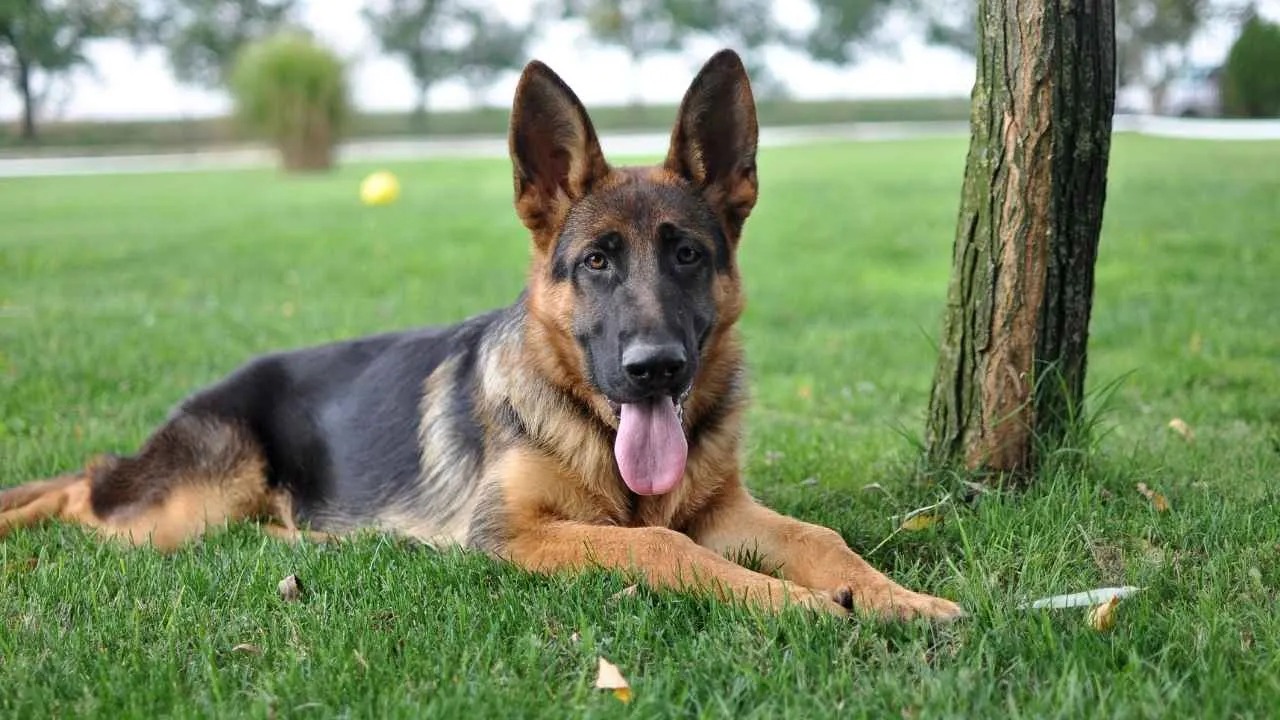
The German Shepherd features a strong, noble head with a long muzzle that contributes to its keen sense of smell. This structure supports the breed’s versatility in roles such as tracking, service work, and protection. Its facial shape combines intelligence, power, and sensitivity.
Developed in Germany for herding and guarding livestock, the breed’s strong nose helped with scent-related tasks. Over time, the German Shepherd became widely used in police and military work. Its long snout enhances its tracking and detection abilities.
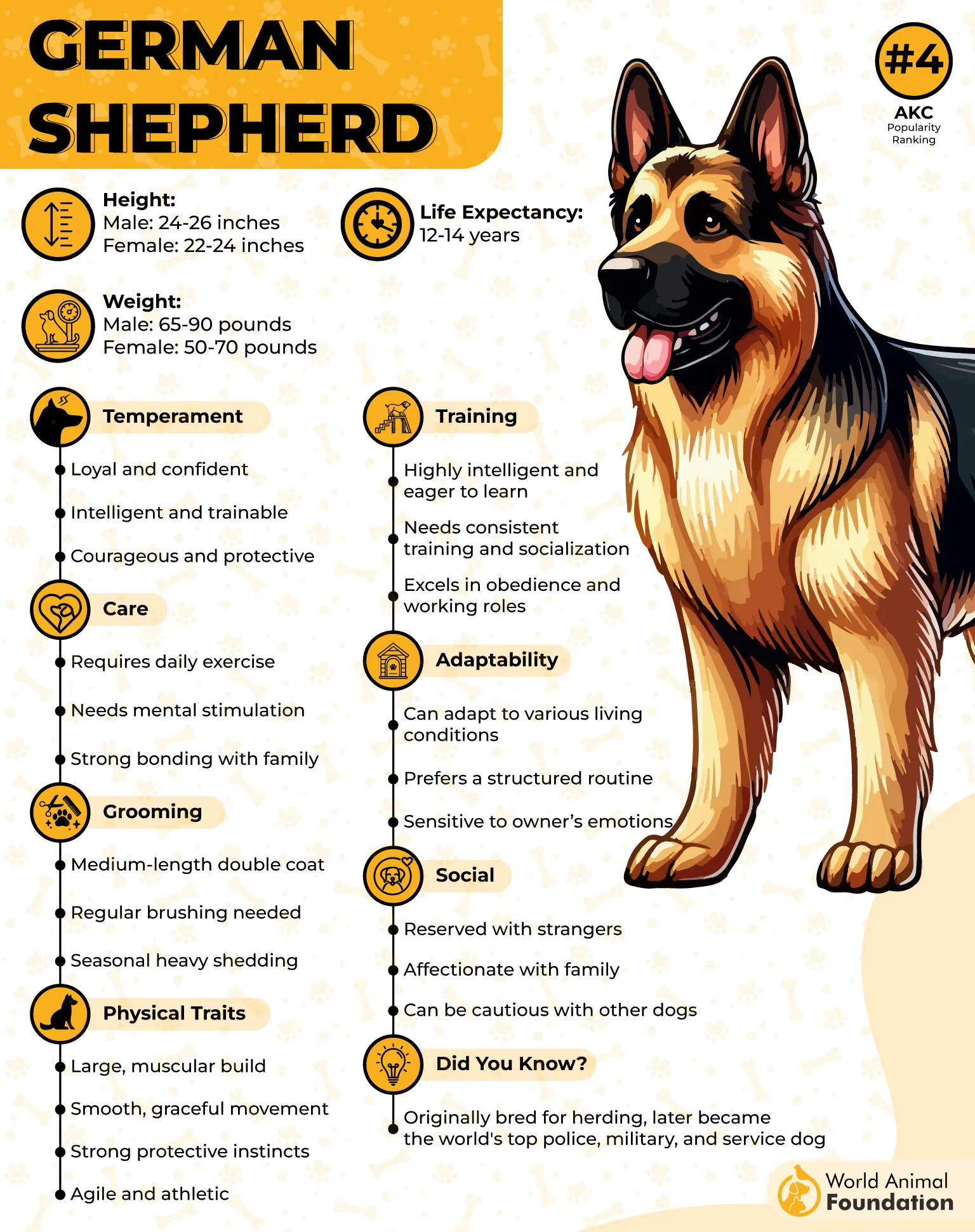
German Shepherds are known for confidence, loyalty, and trainability. Their alert expression comes from a combination of erect ears and an elongated muzzle. These features create a focused, ready-for-action look.
Regular physical and mental activity is essential for this energetic breed. Structured exercise helps keep them balanced and engaged. Their long nose contributes to their enthusiasm for scent-based games and tasks.
The German Shepherd remains one of the most popular breeds worldwide. Its long muzzle is not only functional but part of the breed’s iconic appearance. This distinct feature pairs with a strong work ethic and a deep bond with its family.
Fun Fact
A German Shepherd’s long nose helps it excel in scent work, enabling it to detect scents at concentrations far lower than humans can perceive.
7. Bloodhound
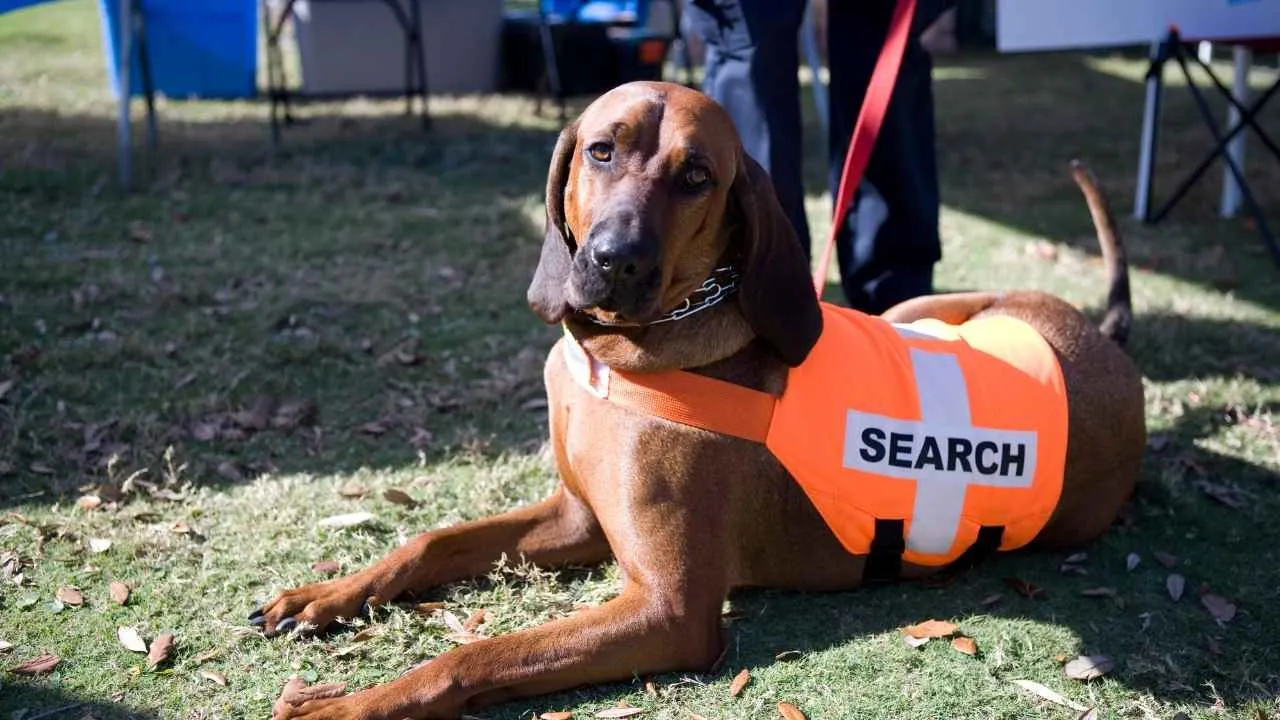
The Bloodhound is famous for its long, deeply set muzzle, which houses one of the most powerful noses in the dog world. This elongated snout supports exceptional olfactory abilities used in tracking. Its facial folds and long ears also help trap scent particles.
Historically bred for trailing deer and wild boar, the Bloodhound became known for following scents over great distances. Its long muzzle contributes to this unparalleled tracking talent. This breed is still used in search-and-rescue missions today.

Bloodhounds have a sweet, patient temperament that contrasts with their intense working drive. Their expressive facial features have loose skin that emphasizes their thoughtful, droopy-eyed appearance. The long nose adds to their unmistakable look.
Providing adequate exercise is important, as the Bloodhound thrives on exploring scents. Its curiosity often leads it to follow trails with determination. Owners must ensure safe environments, as the breed may wander when focused on a smell.
The Bloodhound remains one of the most impressive scent dogs ever developed. Its long, powerful muzzle continues to set the standard for tracking excellence. This remarkable ability makes the breed both iconic and invaluable.
Fun Fact
A Bloodhound’s long nose allows it to follow scent trails that are days old, and its tracking results have even been accepted as evidence in court.
FAQs
Do unique noses enhance scent abilities?
Yes, certain long-snouted dogs have more olfactory receptors, which can improve scenting ability. Breeds with long muzzles often process scent more efficiently thanks to increased airflow and more olfactory receptors.
Are dogs with unique noses harder to train?
Not necessarily. Training sessions depend more on temperament and consistency than nose shape, and many long-nosed breeds are highly intelligent. Positive reinforcement helps pet parents guide both energetic hunters and calm couch potatoes.
Can unique noses be passed genetically?
Yes, targeted breeding influences muzzle shape, and long-nosed dog traits are commonly inherited. Many hunting dogs keep their distinctive feature thanks to long histories of selective development.
Conclusion
Unique noses give many long-snouted dogs remarkable scent receptors, strong scenting ability, and an incredible sense of the world around them. These long-nosed breeds often excel as hunting dogs, guard dogs, or affectionate dogs that enjoy daily exercise, short bursts of activity, or long walks with their favorite humans.
Their lean build, long body, floppy ears, feathered ears, or pointy ears contribute to their eye-catching presence and suitability for active families, other pets, or a devoted canine companion that loves spending time outdoors.
Other dog breeds, such as the Borzoi dogs, Russian Wolfhound, Italian Greyhound, Bull Terrier, Airedale Terrier, Ibizan Hound, Pharaoh Hound, and many other rare breed sighthounds also showcase this distinctive feature.


